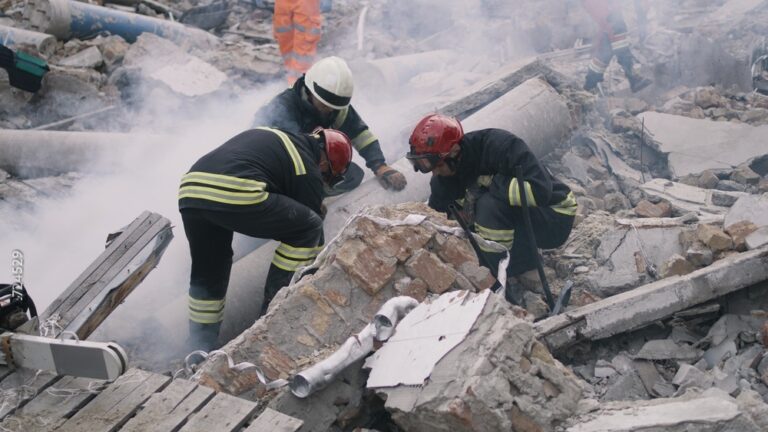Engineering for Disaster Resilience: How to Build Communities to Brave the Unexpected

Disasters, whether natural or man-made, pose significant threats to communities worldwide. Engineering for disaster resilience involves innovative approaches to mitigate these risks, emphasizing proactive planning and robust infrastructure. This comprehensive discussion explores the multifaceted role of engineers in disaster preparedness, the principles of disaster-resilient structures, and the strategies for building communities capable of withstanding and recovering from unexpected catastrophes.
The Role of Engineers in Disaster Preparedness
Engineers play a pivotal role in disaster preparedness by designing and implementing strategies to minimize the impact of disasters on communities. They conduct risk assessments, develop mitigation plans, and design resilient infrastructure capable of withstanding various hazards. Through collaboration with policymakers, emergency responders, and community stakeholders, engineers ensure that disaster preparedness efforts are comprehensive and effective.
Understanding Disaster-Resilient Structures
Disaster-resilient structures are engineered to withstand extreme forces exerted by natural disasters such as earthquakes, floods, and hurricanes. These structures incorporate advanced materials and design principles to enhance their durability and stability during adverse conditions. From earthquake-resistant buildings to flood-resistant infrastructure, engineers employ innovative techniques to safeguard lives and property against the destructive forces of nature.
The Four Pillars of Disaster Resilience
Disaster resilience encompasses four key pillars: robustness, redundancy, resourcefulness, and rapid recovery. Robustness involves building structures capable of withstanding extreme forces without significant damage. Redundancy ensures alternative systems are in place to maintain functionality in the event of failure. Resourcefulness involves leveraging local resources and community capacities for effective disaster response and recovery. Rapid recovery focuses on minimizing downtime and restoring normalcy swiftly after a disaster strikes.
Materials for Disaster Resilience
Various materials are used in disaster-resilient construction, including reinforced concrete, steel, advanced composites, and resilient coatings. These materials offer enhanced strength, durability, and resistance to environmental hazards, making them essential components of resilient infrastructure.
Examples of Disaster-Resilient Infrastructure
Numerous examples of disaster-resilient infrastructure exist worldwide, showcasing innovative engineering solutions to mitigate the impact of natural disasters. From Japan’s Seawall to the Netherlands’ Delta Works, these projects demonstrate the effectiveness of proactive planning and investment in resilient infrastructure to protect communities from catastrophic events.
Components of Building Resilience
Building resilience requires a holistic approach encompassing structural integrity, robust utility systems, effective communication networks, and community cohesion. Structural integrity ensures that buildings and infrastructure can withstand the forces of nature, while robust utility systems guarantee access to essential services during emergencies. Effective communication networks facilitate timely information sharing and coordination, while community cohesion fosters solidarity and mutual support in times of crisis.
Resilient Technologies for Climate Change
Climate change poses additional challenges to disaster resilience, necessitating the development of innovative technologies to adapt to changing environmental conditions. Green infrastructure, early warning systems, adaptive building designs, and renewable energy technologies are among the resilient solutions that can help communities mitigate the impacts of climate change and build resilience against future disasters.
Disaster Resilience vs. Recovery
While disaster resilience focuses on proactive measures to reduce vulnerability and enhance preparedness, disaster recovery involves restoring functionality and rebuilding after a disaster strikes. Both aspects are crucial for building resilient communities capable of withstanding and recovering from unexpected catastrophes.
Need for Disaster-Resilient Infrastructure
The need for disaster-resilient infrastructure is paramount in safeguarding lives, livelihoods, and the environment from the impacts of natural disasters. Investing in resilient infrastructure not only reduces the risk of catastrophic losses but also promotes sustainable development and enhances community well-being.
Examples of Disaster Response
Disaster response encompasses a wide range of activities, including search and rescue operations, emergency medical care, shelter provision, distribution of relief supplies, and restoration of vital services. Examples of effective disaster response efforts highlight the importance of coordination, collaboration, and timely action in saving lives and mitigating suffering.
Structural Measures in Disaster Management
Structural measures in disaster management include building codes, land-use planning, retrofitting of existing structures, and construction of resilient infrastructure. These measures aim to reduce physical vulnerability to hazards and enhance community resilience against disasters.
Non-Structural Measures
In addition to structural interventions, non-structural measures such as policies, education, early warning systems, and community engagement initiatives play a crucial role in disaster risk reduction and resilience building. By addressing social, economic, and environmental vulnerabilities, these measures complement structural interventions and enhance overall resilience.
Engineers’ Responsibility for Safety and Risk
Engineers have a significant responsibility to ensure the safety and resilience of infrastructure through meticulous design, rigorous testing, and adherence to regulatory standards. They must also assess and communicate risks transparently to stakeholders, empowering communities to make informed decisions and take proactive measures to mitigate disaster risks.
Designing for Disaster Preparedness
Designing for disaster preparedness requires integrating resilience considerations into every stage of the engineering process, from conceptualization to implementation. This includes incorporating flexible design features, adopting sustainable practices, and engaging with local communities to ensure their needs are addressed effectively.
Conclusion
In conclusion, engineering for disaster resilience is a multifaceted endeavor that requires proactive planning, innovative solutions, and collaboration across disciplines and sectors. By prioritizing resilience in infrastructure development and disaster preparedness efforts, engineers can help build communities that are better equipped to withstand and recover from the unexpected challenges posed by natural disasters.
